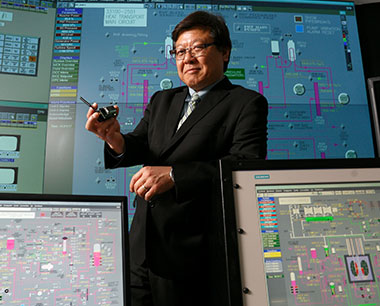“In Jiangsu we work closely with Jiangsu Science and Technology Commission. Jiangsu Science and Technology Commission supports our activities in Nanjing by funding further R&D work of various Western technologies towards successful commercialization in China.” – Ling Ting
For Ling Ting, China’s market holds vast potential. Ling is WORLDiscoveries® Director of Asian Operations headquartered in Hong Kong with its first sub-centre in Nanjing, the capital of Jiangsu Province and former capital of the Ming Dynasty.
Opportunities in Asia for WORLDiscoveries® are everywhere from India to Japan and Korea, but WORLDiscoveries has found Jiangsu Province, bordered by the mighty Yangtze River and the Yellow Sea, a prosperous region north of Shanghai, to be the perfect springboard to commercialize Western University’s intellectual capital throughout Asia.
WORLDiscoveries Asia was the first North American university technology transfer office to open in China and Ling feels their approach to commercialization raises the bar high. “We have signed eight exclusive deals including five in China – that set us apart from others in the technology transfer sector in Ontario, if not Canada,” he says.
For example, WORLDiscoveries Asia reached a cooperation agreement with Sinobioway Group Co., Ltd. in Beijing to develop and commercialize the Sox9 target and candidate therapeutics for the regeneration of the Central Nervous System. This therapy includes small molecules, peptides and nucleotides to repair damage in a range of central nervous system diseases such as stroke, Traumatic Brain Injury and neurodegenerative disease. The agreement granted Sinobioway the exclusive right to commercialize the Sox9 invention in China and hopefully move the project to clinical trials and eventually, to market.
WORLDiscoveries Asia has also developed a solid relationship with Nanjing University – an institution that specializes in science, medicine, engineering and technology.
Innovation flourishes when strong partners combine their mutual interests to move Research & Development (R&D) out of the lab and into the global marketplace. But this can be a challenge when collaboration takes place across two continents. Getting plugged into the local network in China helps WORLDiscoveries develop key local stakeholders.
“In Jiangsu we work closely with Jiangsu Science and Technology Commission, the equivalent of Ontario’s Ministry of Research and Innovation,” says Ling. “Jiangsu Science and Technology Commission supports our activities in Nanjing by funding further R&D work of various Western technologies towards successful commercialization in China.”
Because of these important developments, Premier Dalton McGuinty chose to visit the lab of a Nanjing based partner of WORLDiscoveries® Asia on his final trip as Premier of Ontario in January 2013. “He saw fi rst-hand the role that WORLDiscoveries® Asia has played in Western’s China strategy,” says Ling. The Ontario government/Western delegation toured Nanjing University’s Key Laboratory of Pharmaceutical Biotechnology where scientists are working with WORLDiscoveries® Asia to develop the pharmaceutical potential of one of Western’s discoveries, a small cyclic peptide as anti-microbial agent and wound-healing treatment, developed by Dr. Gilles Lajoie of the Schulich School of Medicine.
Premier McGuinty and Western University’s President Amit Chakma signed a faculty exchange agreement with Nanjing University to strengthen the ties that bind the two universities. In China, where luck is highly valued, they say good things come in pairs. Certainly there is symmetry of interest between two universities – Western and Nanjing, two sister provinces, Ontario and Jiangsu, and two sister cities, London and Nanjing. This longstanding spirit of cooperation brings an extra dimension to the work of WORLDiscoveries Asia.
“We are looking to build a new model to create a bigger platform for technology transfer in China,” says Ling. “And yes, a little luck is important too.”
Read more










